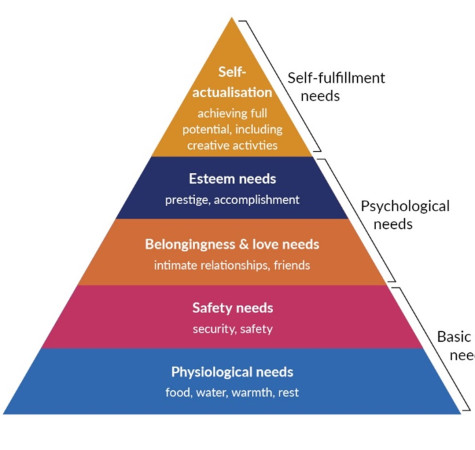Employee Engagement Guide
Table of Contents
Employee Engagement Guide
In this guide, we will take you on a journey. Starting with the purpose and value of employee engagement before moving on to some strategies to help you improve and measure employee engagement in your organisation.
What is employee engagement
Employee engagement is the measure of an employee’s emotional connection and commitment towards an organisation.
But while employee engagement is a measure of how an employee feels, it is the organisation that influences that opinion. Engage for Success explain this succinctly; “Employee engagement is a workplace approach resulting in the right conditions for all member of an organisation to give of their best each day.”
Why is employee engagement important?
Employee engagement is proven to benefit businesses in multiple ways. Here are a few stats that evidence how:
- Profitability will increase – companies with a highly engaged workforce have 21% higher profitability
- Employee retention will increase – organisations with high levels of engagement have 40% lower staff turnover rates than companies with lower levels of engagement
- Customer satisfaction will improve – organisations with top quartile engagement scores average 12% higher customer advocacy
- Employee health will improve - engaged employees suffer from fewer “unhealthy” days than disengaged employees
- Absenteeism will decrease – organisations with engaged employees have a 41% reduction in absenteeism from this study
These facts speak for themselves and there are many more statistics online that further demonstrate the value of employee engagement, should you need them.
How employee engagement differs from employee satisfaction
Employee engagement and employee satisfaction often get intertwined but, actually, the two describe something very different.
As the definition above highlights, an engaged employee is someone who is committed to helping their organisation achieve their goals. In contrast, employee satisfaction describes someone that is happy in their job. For example, Tom works an 8-hour shift at a factory. He feels he has adequate breaks, the equipment and knowledge necessary to do his job and a decent salary. His commute is minimal and he takes home no stress from his job. Tom is satisfied with his job and yet if you were to ask him what the company’s goals were he has no idea. He does not consider himself to be part of the journey, he just works a job that he is contented with.
Contributing factors
Contributing factors that influence employee satisfaction include salary, benefits, recognition and work-life balance.
In contrast, contributing factors that influence employee engagement include career opportunities, leadership behaviours, internal communication and company culture.
While there is a clear distinction between employee engagement and employee satisfaction it is important to note that the two are equally important. While an engaged employee can withstand a period of job dissatisfaction, if they cannot foresee improvements in the future, this is not sustainable and the majority of employees will only become engaged employees if they are first satisfied in their job.
Maslow’s hierarchy of needs explains this perfectly. It is only when an employee moves up through the psychological needs and into self-fulfilment needs that they will be engaged. The needs at the bottom of the pyramid must be in place before they can progress.

What other factors influence employee engagement?
Employee engagement is a combination of a wide range of factors. Below are 15 areas that all influence employee engagement, each of which should be considered within your employee engagement strategy. However, it is important to note the weight in which each factor holds over employee engagement will depend very much on the individual because different personalities will react differently to what they are presented with.
15 factors that contribute to an engaged workforce
- The vision of the organisation – do employees know it and can they relate to it?
- The product or service – is the very purpose of the company something the employees are proud of?
- Trust – do employees trust the leadership and does the leadership trust the employees? Is there an appropriate level of autonomy?
- Transparency – do employees have a good understanding of business performance? Do they feel leaders are honest?
- Career opportunities – are employees able to progress their careers?
- Learning – are there adequate opportunities to expand knowledge and understanding?
- Equipment and tools – do all employees have everything they need to do their job well?
- Culture – is there an inclusive culture with behaviours that are consistently demonstrated?
- Employee voice – is there sufficient opportunity for employees to have their say and share their opinion? Are those opinions listened to?
- Recognition and reward – are pay scales fair? Do employees get recognised for outstanding work?
- Work-life balance – is employee wellbeing considered and supported?
- Responsiveness – is the organisation effective at responding to incidents and major factors that influence the business?
- Internal communication – is there an effective internal comms function that keeps employees connected to the wider business and company goals?
- Use of talent – do your employees fully utilise their individual talents within their role?
- Manager/employee relations – are your managers effective? Do they have the respect of their team?
The impact of different personalities
While the 15 points above all need to be considered, how they are received will depend upon the personality and behaviours of your employees. Whilst you cannot psychoanalysis each of your employees it is worth considering the traits when you are planning your engagement strategy, particularly if you have a lot of employees sitting either side of the camp.
Below is an example of some of the traits and behaviours you can expect to see within engaged and disengaged employees.

It is worth noting, a lot of these behaviours can be changed. With the right strategy you can influence these, but you will need to consider different strategies should you have people at polar opposites. You could also consider recruiting those displaying engaged traits to help you win over the less engaged team members.
Who is responsible for employee engagement?
In short, everyone! Employee engagement impacts your entire organisation and is affected by every single relationship within it. Every individual within the business, therefore, has a role to play.
The role of HR
HR should foster a culture of engagement – becoming a leading example of how others in the organisation need to behave and ensuring the relevant policies and guidance are in place to support this. The HR team will also need to support and develop managers and manage any day-to-day matters that influence employee engagement.
The role of leadership
All eyes are on the leadership team so they need to ooze with all the positive traits and behaviours that will drive employee engagement forward. From setting the company vision, to communicating effectively, to interacting with employees with respect. Your leadership team should become your employee engagement advocates and inspire employees through their own actions and behaviours.
The role of managers
Managers are the linchpins that bring the aspirations of the business to life for employees. They must create a working environment that is transparent and respectful. One that fosters strong working relationships and supports employees with the day-to-day working life and career aspiration. This grounded and supportive approach, combined with their own demonstration of the values will encourage employees to engage.
The role of employees
It is important not to lose sight of the value an individual employee can have on your employee engagement strategy. One highly engaged employee can often have far more influence on their peers than a manager. So, make sure you listen to them too. Ask them for feedback on your strategy; give them an opportunity to contribute and bring innovative ideas to the table. Also, remember that for them to be engaged they need to be empowered to make their own decisions. Checking that this is the case on a regular basis will always be beneficial.
10 steps to improve employee engagement
For you to improve employee engagement you must first understand your current situation. In fact, analysis plays the biggest part in improving employee engagement; hence the first 8 points in the 10-step guide covering your existing ways of working.
Understand what your employee engagement levels are
if you have been measuring employee engagement gather together all the data to understand your current situation. If you haven’t, it will be worth running an employee survey to find this out. Without this information, you cannot measure the success of the actions you are going to take.
Listen
if you recognise a need to improve employee engagement your first port of call to improve it should be your employees. What do they think? What is important to them? This will not only give you the basics of a strategy but also help you to prioritise.
Review your recognition scheme
consider whether your recognition scheme is effective. Are all employees recognised equally? Is that recognition well received? Do people get recognised for effort or for the time they’ve worked? If the latter, it may be time to review it. Similarly, are employees incentivised or recognised? While incentivising works with certain personality types others respond far better to recognition. Ensure you have the right balance for the right teams.
Review your development and training policies
if your employees state a lack of opportunity as an issue it will be beneficial to take time to explore your training and development policy. Does it meet the needs of ALL employees? Is it promoted effectively?
Review your wellness policy
how effective are you at supporting the wellness of your employees? This relates to both physical and mental wellbeing. Your approach should cover both an individual’s wellness and their understanding and appreciation of their colleague’s wellness.
Review your communication methods
a lack of transparency can often be a route cause for employee dissatisfaction. But this comes in two forms. Firstly a genuine lack of transparency in which information considered to be important to the employees simply isn’t getting through. This is a quick fix, assuming all management team members are on board.
The second is trickier
this is where employees perceive the organisation to be obscure and ambiguous. A perception is far harder to change, particularly if it is an incorrect perception. To resolve this issue you will need to strip things back and unearth where the perception stems from. Inevitably it will be a cultural issue, but you won’t be able to fix it until you fully understand where it stems from. Focus groups, employee surveys and 1:1s will all be an effective way to drill into this. All will require time but depending on the depth of the challenge, this is likely to be time well spent.
Review your onboarding process
how successful are you in embedding your company culture with your new starters? This should be from the very first engagement they have with you at the job application stage all the way through to their onboarding process when they start their employment with you.
Review your cultural values and mission
are your company values demonstrated in the actions and behaviours of all your employees? Are your employees bought into your mission?
If employees aren’t connected with your mission there are three possible reasons:
1. They are unaware of it
2. They do not believe in it
3. There is something else within their workplace that holds them back
If your values aren’t being demonstrated there are typically just two reasons:
1. They are the wrong values for your organisation
2. Your wider company culture prevents these values from being displayed.
Your task will be to understand the reason and then dig deeper to find the root cause.
Put a plan together
improving employee engagement is a long-term commitment. While you are likely to have some short-term fixes, many of the improvements you make will take time. By putting together a roadmap of your plans and communicating this with your employees they will be able to see your commitment to improved employee engagement.
Measure employee engagement
there is no point in embarking on an employee engagement improvement programme if you do not have measures in place to monitor their success. The more you can measure the more confident you can be in the decisions you make. This is a vital step so we have detailed ways in which you can measure employee engagement in the section below.
How to measure employee engagement
The purpose of employee engagement is to improve the experience of your employees and the performance of your business. Measuring your progress is therefore critical. But despite this 48% of businesses do not measure the effectiveness of employee engagement. To avoid implementing employee engagement strategies that go unrecognised here are some effective ways to measure their success.
Employee engagement
perhaps an obvious point but one that many organisations overlook. Often because it isn’t currently something they measure. But it is very easy to measure how engaged your employees are with the right tools and processes in place.
First, you need to consider how frequently you are going to measure employee engagement:
At a set period of time
select a set time of the year in which you survey employees and use the results as a measure. That may be part of a wider staff survey or specifically an employee Net Promoter Score (eNPS). The sole purpose of which is to measure employee engagement
Continuously
some organisations prefer to have a real-time view of employee engagement. This is beneficial if you have a number of variables that could impact a one-off score, such as a seasonal peak in work pressure for example.
Another factor to consider is whether you want to measure employee engagement purely as an entire company or whether it would be useful to understand at a team level too. This is usually dictated by company size and/or your processes. Larger organisations typically benefit from greater insight at a team level purely because of their scale. But some organisations also choose to drill down deeper because they have the internal processes to be able to effectively respond to any dissatisfaction. By picking this up at the team level, these organisations can be very responsive and start resolving the challenges that cause the disengagement before it affects others in the organisation.
Once you have decided the above you then need to decide how you are going to measure employee engagement.
If you have an employee engagement platform this will all be done for you. The software will automatically monitor interactions with your internal communications and, taking many different factors into consideration, give you real-time engagement scores.
Employee Surveys
If you don’t have employee engagement software, you can run an employee survey. Either of the following would be suitable.
- Employee surveys can include a section that asks people about their level of engagement. These questions should be consistent every time they are asked to give you accurate results.
- eNPS surveys – an employee Net Promoter Score (eNPS) is an effective way of measuring employee engagement. With just one question you can quickly gauge engagement levels providing a solid benchmark to work from.
Whichever method you choose from above, we recommend you use the results alongside some, or preferably all, of the following:
Staff turnover/employee retention
by keeping tabs on how many people are leaving your organisation you can get a good indication of the scale of disengagement.
If you have them record historical figures because until you have these you have no benchmark to work from.
Exit interviews
as employees leave you could get some valuable insight into why they felt disengaged. This will often provide a depth you can’t gain elsewhere so it is worth tuning into this data source. You may also want to consider adding some specific questions around engagement in the exit interview for more direct feedback.
Absenteeism rates
a study by Gallup found that disengaged employees have a 37% higher absenteeism rate than their engaged counterparts. Monitoring your absentee rates will be a valuable addition to your statistics. It is also a great early indicator for disengagement which will always be helpful.
Productivity
evidence shows that disengaged employees are less productive. You are likely to already have ways of measuring productivity, whether through output statistics or 1:1s. By reviewing these historically at a team or company level, you will be able to identify trends.
While engagement may be the cause of decreased productivity it is important to remember there could be many other causes too, such as process failings, silo working and inefficient tools or equipment. This statistic should therefore always be aligned with others to see if the trends marry with other findings.
Profitability
a very high-level factor but as we know, engaged employees do result in greater profitability so it is worth measuring this connection. If nothing else, it can be used to help evidence the value of employee engagement.
Customer satisfaction
organisations with top quartile engagement scores average 12% higher customer advocacy. It is therefore valuable to keep tabs of customer satisfaction alongside employee engagement so that you can observe trends. As with profitability, this will also be a useful data point to evidence the success of employee engagement.
There is a reason that ‘measuring employee engagement’ is the biggest section in this guide. Measuring the performance of your employee engagement strategy is absolutely vital. Without it you cannot deliver communications your employees want to hear, you cannot identify ways to improve employee engagement and you cannot evidence the value your employee engagement efforts are having on the wider business.
Conclusion
If you’ve reached the end of this blog well done, there was a lot to get through! What your dedication suggests is that you are clearly committed to either beginning, or improving, employee engagement within your organisation.
The information above should help you to build that strategy, but employee engagement is a big project. In a recent study, we found that half of those responsible for employee engagement spend less than a quarter of their working time on the function.
If you too are going to be stretched on time focus on doing less, but more effectively. Deploying a tactic and having the right measures in place to monitor its performance will offer you far more value than deploying many tactics with no ability to measure them.

Daniel Wright
Marketing Executive
Passionate in helping internal communicators reach and engage their organisation’s employees.
Relevant resources

NHS Email Analytics Report
NewZapp is a very proud, award winning provider of internal communications software to the NHS. And as such, in a very unique position

How to grab employees’ attention with your internal comms
People are a tough audience to crack. Today you have to work even harder to grab your employee’s attention.

7 steps for effective change management communications
Change is a vital and common part of any evolving organisation. As such, change management communications consume a big chunk of an internal



